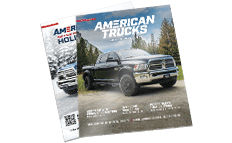
Cross Drilled vs. Slotted Rotors
There’s no denying brakes are the most critical component of the entire vehicle. Having a powerful engine with a lot of horsepower will turn some heads, but if your brakes aren’t strong enough to control that speed, then you would be putting yourself in danger and risk getting in an accident. Just like in life, it’s what’s on the inside that matters!
How the Braking System Works
Before we get into the different types of rotors, let’s first talk about the braking system as a whole and what purpose rotors serve in your vehicle.
A modern hydraulic disc braking system is made up of several complex parts. The three most important components include:
- The Disc rotor
- The Brake Caliper
- The Brake pads
The disc rotor is attached to the wheel hub, freely spinning with the wheels as the vehicle is in motion. The brake caliper is fixed in place and contains the brake pads. These pads are activated by pistons that fire via a pressured hydraulic system, which causes them to squeeze against the surface of the disc rotor and create friction. This, in turn, allows the brake rotors to slow down and bring the wheel to a complete stop.
Think of the disc rotor as a spinning ceiling fan, and the brake pads are a stick reaching between the fan blades to stop it from spinning. The fan won’t come to a complete stop immediately, but if the stick is strong enough it can make the fan stop spinning pretty quickly when it's placed between the fan blades.
That’s how a braking system works!
What are the Different Types of Disc Rotors?
Just like with all things in life, not all rotors are created equal. That means there are other disc varieties that offer better functionality and performance compared to the standard smooth rotor styles that most cars are built with.
For example, disc brake rotors with a larger surface area can dissipate heat more effectively than smaller varieties. Furthermore, when drilled holes or grooved slots are also added to the disc rotor, they can provide further ventilation to remove heat, debris, and gases that are often generated from the brake pads.
Upgrading your rotors means adding more ventilation methods to your braking system, which in turn helps the discs last longer and stop your car quicker. Below are the most common types of rotors available on the market today.
Which To Buy?
So now that you’ve gotten an in-depth look at both these options, do you know which rotor is best for you?
If you need a braking system that creates serious stopping power for your performance vehicle, slotted rotors might be the right choice for you. This rotor is also recommended for those with larger vehicles or those looking to tow a heavy load.
But if you’re not looking for added braking performance or rotors that are built for excess use, your daily driving needs can be met perfectly with cross-drilled rotors.
Plus, they’ll perform better in wet weather conditions and will have the benefit of looking awesome.
Before making a purchase, make sure to also consider floating vs solid rotor options as well.
When it comes to brake disc rotors and braking systems, do your research and remember that quality is key. Consider first the needs of your vehicle, and also your desired budget.
Whether it’s daily driving, towing cargo, grand touring up the coast, or tearing up the racetrack, don’t forget that at the end of the day—good brakes can save your life.

